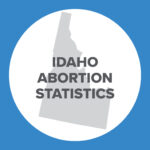Induced Abortion and Risk of Subsequent Preterm Birth
This is Issue 1 of the On Point Series.
Preterm birth is one of the most significant challenges facing the field of obstetrics and remains a considerable public health issue. For years, concerns have been raised about a potential association between frequently performed induced abortion procedures and preterm delivery in subsequent pregnancies. Such concerns have been largely ignored in mainstream U.S. medical literature and are unknown to wider public opinion. However, a growing body of worldwide evidence suggests that the association between preterm birth and history of induced abortion is indeed credible. Several clinically relevant, recently published studies deserve widespread attention and should inspire renewed reflection on public health implications.
Every year in the United States, more than half a million babies are born prematurely, prior to 37 weeks gestation. In 2007, this represented 12.7% of the babies born in the United States. Preterm birth is associated with considerable problems, including significant infant morbidity and mortality, parental stressors, and financial burden. Preterm delivery is a complex obstetrical complication with many contributing factors and potential causes. Many factors related to a woman’s risk of preterm delivery are outside a patient’s control. In contrast, modifiable risk factors, those that can be altered or eliminated to reduce a woman’s risk of preterm delivery, remain the subject of intense study and some debate in obstetrics.
In the decades following legalization of abortion in the U.S. and several European countries, considerable debate has ensued regarding the consequences of induced abortion for future pregnancy outcomes. Historically, obstetricians have considered abortion procedures to be risk factors for subsequent adverse pregnancy outcomes, including preterm birth. In 1979, the World Health Organization reported that a history of abortion correlated with an increased risk of second-trimester pregnancy loss, even after demographic characteristics such as smoking and maternal weight were controlled
Today, induced abortion is one of the most common gynecological procedures performed on women. According to the U.S. Census Bureau, relying on both survey research and unpublished data from the Guttmacher institute, 1.2 million abortions were performed in the United States in 2007, and that number has grown over the past six years. Many women begin their reproductive experience with an abortion prior to subsequent childbearing. Thus, the extent to which induced abortions affect subsequent pregnancy outcomes is a public health concern.
Despite this, within the U.S. medical literature, induced abortion has largely been ignored as a risk factor for preterm birth. Informed consent for abortion procedures does not routinely mention future preterm delivery or other adverse pregnancy outcomes as possible risks of the procedures. Reasonable doubt regarding the association initially arose in the first decades following abortion legalization in the United States. At that time, several studies either reported no association between abortion and adverse outcomes in subsequent pregnancies or demonstrated conflicting results. However, many of these early studies suffered from small sample sizes, short follow-up timeframes and other methodological limitations. Studies published in European journals periodically raised the issue and reiterated findings of an association of varying degrees between preterm delivery and a history of induced abortion. While popular belief remains among many American obstetricians that preterm birth and induced abortion history are unrelated, a mounting body of worldwide literature suggesting the contrary is gaining greater attention and acceptance.
In 2011, it was openly acknowledged in The American Journal of Obstetrics and Gynecology that a growing body of large, population-based studies have credibly shown elective pregnancy terminations in the first and second trimesters to be associated with an increased risk of subsequent spontaneous preterm birth. In 2009, a large literature review was published on the subject in the British Journal of Obstetrics and Gynecology. Study findings were based on results analyzed from 37 studies, spanning 40 years. The study concluded that a single induced abortion was associated with a 36% increase in odds of subsequent preterm birth. More than one induced abortion was found to nearly double a woman’s odds of preterm birth.
In 2012, two additional large, population-based studies examining this subject were published in the European literature, one in Human Reproduction and the second in The British Journal of Obstetrics and Gynecology. Both are widely read, well-respected journals within the worldwide obstetrics community, and both studies reported results showing increased risk of preterm birth following induced abortion.
Finland’s National Institute for Health and Welfare conducted the study published in Human Reproduction, which included over 300,000 first-time mothers with a singleton birth over a 12-year time period. Researchers reported that, after adjusting for confounding background variables such as maternal age, socioeconomic and marital status, smoking and previous miscarriages, women with a history of one or more induced abortions showed increased odds of delivering prior to 28 weeks gestation in a future pregnancy. The odds of very preterm delivery increased with repeated induced abortions and ranged from a 20% increase after one induced abortion to a 278% increase following three or more induced abortions. The odds of preterm delivery prior to 37 weeks were reported at a 35% increase and were seen only among mothers with three or more induced abortions.
Also published in 2012 in The British Journal of Obstetrics and Gynecology was a national, register-based study performed in Scotland, this time using over 26 years of data from over 650,000 births. The study reported that, after adjustment for numerous potential confounding background variables, a history of one induced abortion increased the risk of spontaneous preterm birth by 37%. Researchers did not find further increased risk in women with more than one induced abortion.
Just what do these results mean practically? Literature and media reports of odds ratios and relative risks may sound impressive, but they can be confusing for patients and can be challenging for clinicians to interpret and apply in medical management decisions. It is important to note that increases in risk can sound impressive, yet have little clinical relevance for individual patients or societal groups if the initial risk or the overall incidence of the risk-increasing factor is low.
Because the risk of preterm delivery among first-time mothers is relatively low (reported as 5.6% in the Finnish study for instance) compared to the overall birth rate, some consider the increased risk of preterm delivery following induced abortion as reported in these studies to be small in practical terms. Others have gone so far as to say that women should not be alarmed by such results. However, such clinical opinions are being openly debated in the current literature. When considering procedures as frequently performed as induced abortion, even small associated increases in the risk of poor subsequent birth outcomes could have significant public health implications. For instance, the preterm delivery odds increase of 30-40% seen in many of the above studies is comparable to the risk observed due to other accepted preterm birth risk factors, such as maternal age greater than 35, and higher than the risk associated with factors like low pregnancy weight and heavy smoking. Smoking-cessation programs for pregnant women are rightly considered to be an important means of reducing preterm birth, yet they are shown to reduce the preterm birth rate by 16-31%, which is less than the rate decrease seen from avoiding induced abortion, as predicted by the above studies).
It must be noted that observational studies like the ones noted here, no matter how large and well-controlled, cannot prove causality. However, as reported in these studies, the increased risk of preterm birth and other adverse subsequent pregnancy outcomes following induced abortion is both clinically relevant and important from a public health perspective. Health care professionals should be informed about the potential risks of induced abortion on subsequent birth outcomes and women considering abortion should be given this information as part of the process of obtaining informed consent.
Elizabeth Ann M. Johnson, M.D. is a Fellow, Program for Human Rights and Health, University of Minnesota School of Public Health.
Steven Calvin, M.D., is Clinical Associate Professor Department of OB/GYN & Women’s Health, Co-chair of the Program in Human Rights and Health in the School of Public Health, University of Minnesota.

























